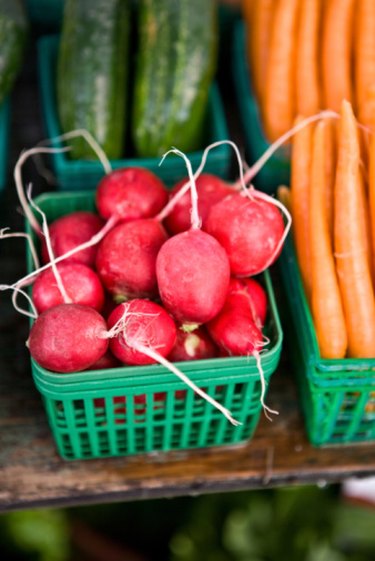Things You'll Need
Hoe or shovel
Organic matter
Soil test
Fertilizer
Lime
Mulch

Fall gardens are a great chance to rotate crops, and having fresh vegetables well into autumn makes a cold season brighter. Vegetables don't need a particular season to grow, but rather they need particular conditions. Fall vegetables require daylight temperatures no lower than 60 degrees F and no higher than 80. Some light frost isn't a problem, but nighttime temperatures must be above 40 degrees F. Plant your garden is full sun, so that it gets at least six hours of light a day.
Step 1
Prepare the soil for your garden by choosing a well-drained area that gets full sun. Contact your county extension office to get a soil test to determine amendment needs, if you haven't done so in the last several years.
Video of the Day
Step 2
Till the soil using a hoe or shovel and add organic matter such as leaf mold or compost. Work in the fertilizer and lime supplements appropriate to your particular soil. Vegetables tend to prefer a pH between 6.0 and 6.5, and any lime you use to raise your soil's pH should be added before planting.
Step 3
Plant cabbage, cauliflower, celery, onions and root vegetables such as potatoes, carrots or turnips in September. Plant mustard, kale or spinach in October.
Step 4
Apply a layer of mulch 1 to 2 inches thick over the bed to keep weeds at bay. Keep the mulch 4 to 6 inches away from the base of each plant and seedling.
Step 5
Water during dry periods by giving your garden a deep drink on a weekly basis. Smaller amounts of water, applied more frequently, are only preferable during seed germination.
Tip
Plant your seeds according to their size, with small seeds -- such as carrot or turnip -- going around ¼ or ½ inch deep, and larger seeds -- bean- or pea-sized -- an inch or so deep.
Water plants after transplantation.
Warning
Do not water from overhead, but rather at the base of the plants. This will help limit the spread of fungus and disease.
Video of the Day